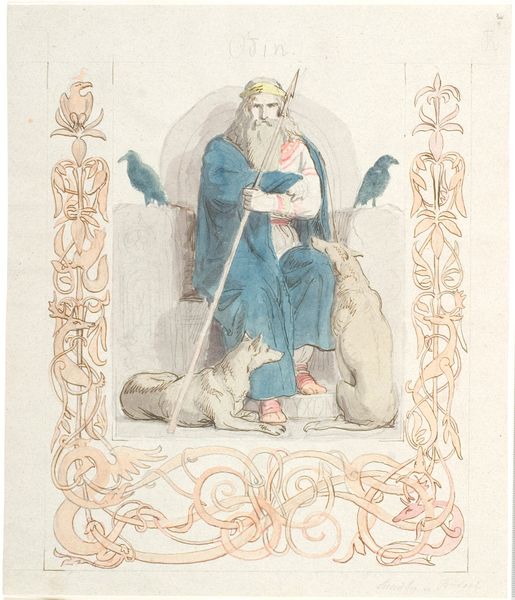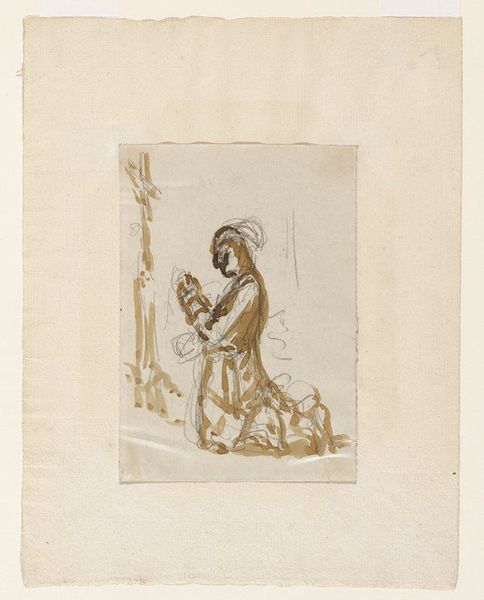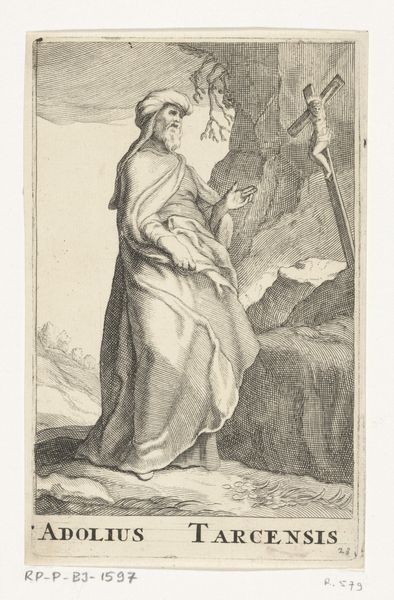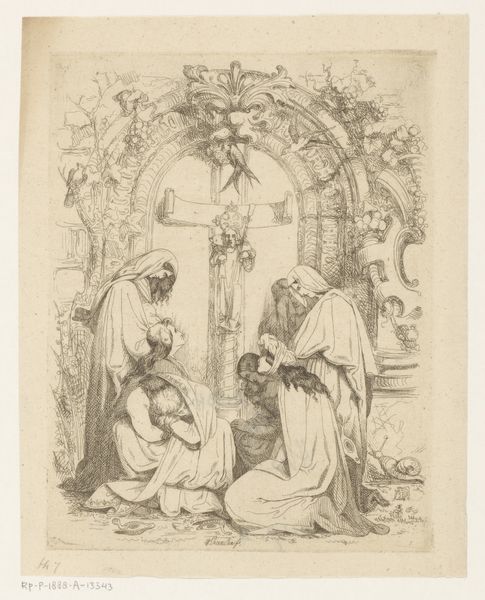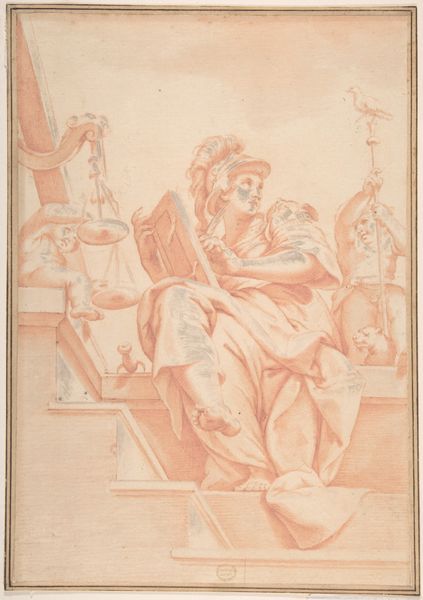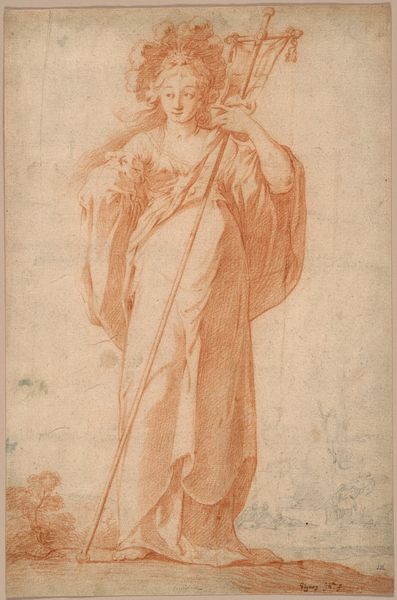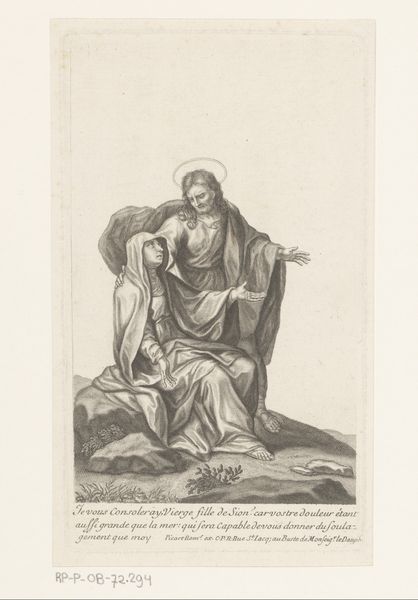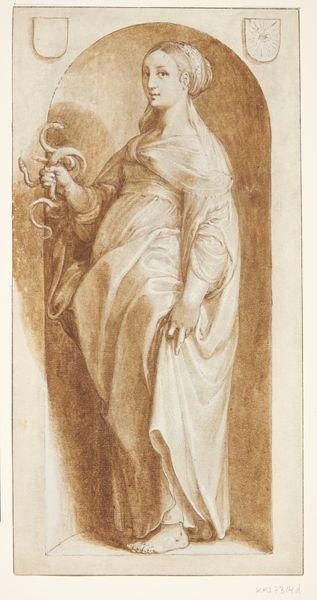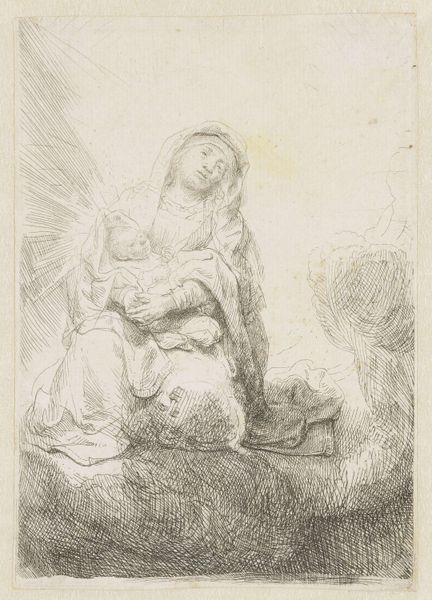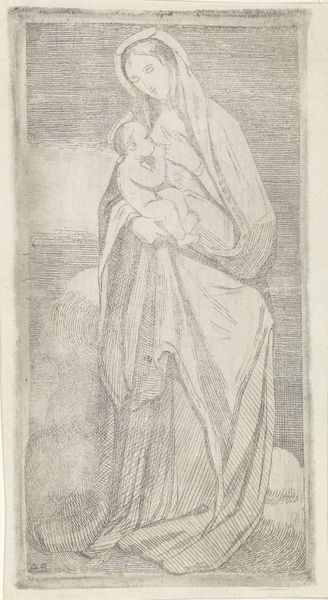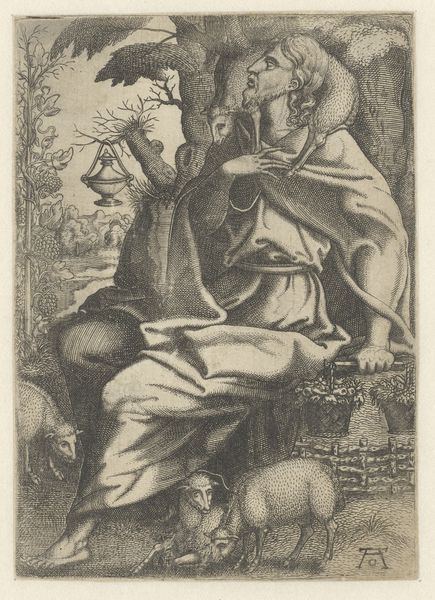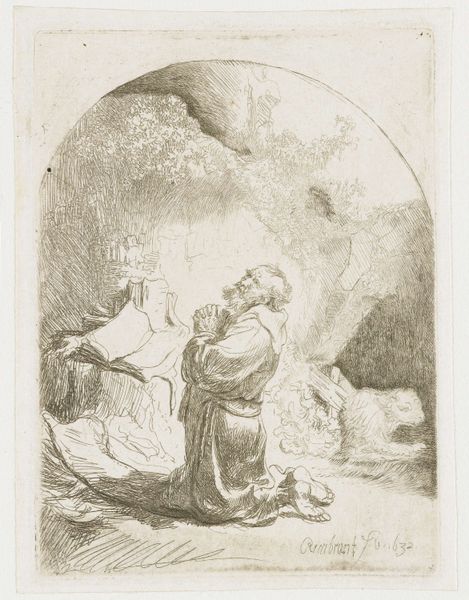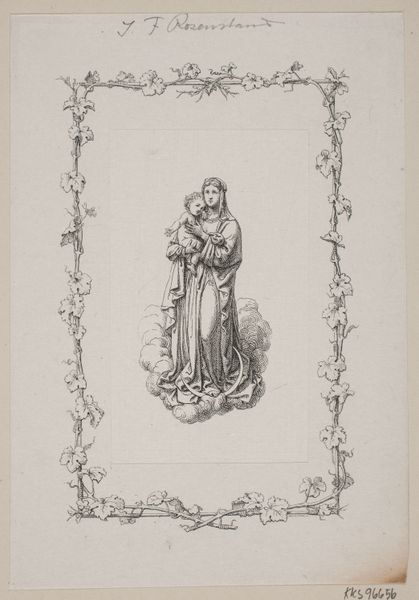
drawing, watercolor
#
drawing
#
narrative-art
#
landscape
#
figuration
#
watercolor
#
romanticism
#
watercolor
Dimensions: 319 mm (height) x 218 mm (width) (bladmaal)
Editor: This is "Freia," a watercolor and drawing piece by Lorenz Frølich from 1844. It reminds me of illustrations in old storybooks, a sort of dreamy vision. What's striking is the use of a decorative frame. What do you make of the cultural significance? Curator: That decorative frame points to something crucial. Romanticism in the 19th century was obsessed with national identity and mythology. How do you think artists at that time were reshaping traditional narratives? Editor: It feels like a deliberate revival, maybe trying to construct a shared cultural heritage through art? Curator: Exactly. And notice the figure of Freia herself, the Norse goddess of love, beauty, and fertility. What does depicting mythological figures, especially female deities, accomplish within a patriarchal society’s artistic landscape? It's worth thinking about how artists in Frølich’s time negotiated themes that subtly pushed against conventional norms. Editor: So, it is not *just* illustration. The artist chooses this specific story to make some kind of commentary on how the world values feminine attributes and roles, in a male-dominant society? Curator: Precisely! It’s an assertion of cultural roots interwoven with societal values. That frame isn't just decoration; it's a carefully chosen symbol. Editor: I see it now – it’s an encapsulation of cultural and social undercurrents! Curator: And by displaying works like these, museums reinforce some narratives while perhaps obscuring others. Food for thought about whose stories get told and how.
Comments
No comments
Be the first to comment and join the conversation on the ultimate creative platform.
